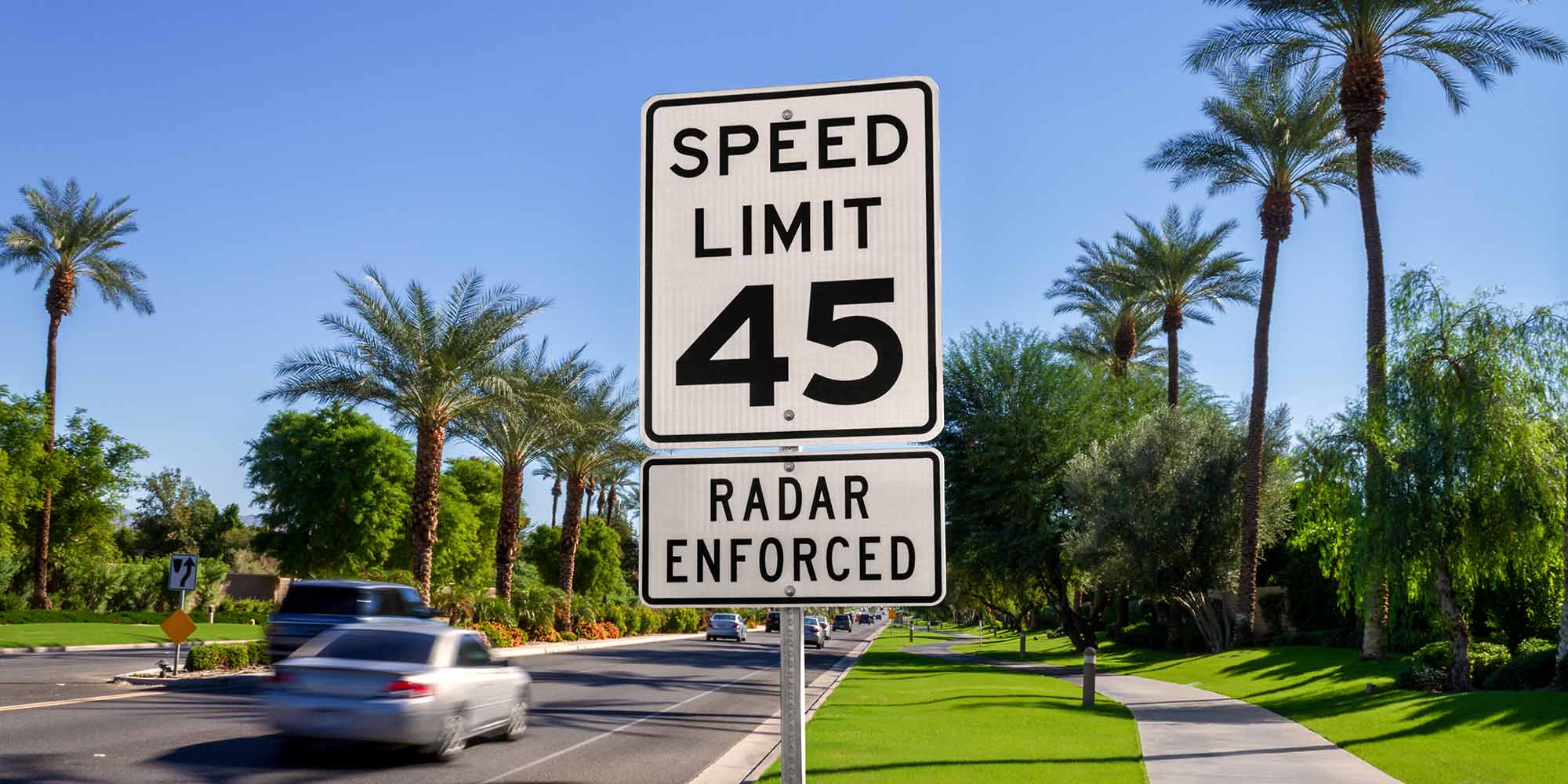You’ve probably done it yourself. Maybe you were running late for an appointment or trying to make up for lost time. But suddenly, the speedometer needle on your car inches past the posted speed limit.
While it may seem harmless, the reality is that speeding is a risky behavior that can have dire consequences. Let’s explore why driving at the speed limit matters and how you can be a more responsible driver.
Why Do We Need Speed Limits?
Why do speed limits exist in the first place? We can trace the history of speed limits back to the early days of automobiles when reckless driving was rampant. Cities and towns introduced speed limits to curb the chaos on the roads and ensure the safety of all road users.
Today, speed limits come in various forms, tailored to specific road types and areas. They are a crucial component of road safety, promoting order and reducing accidents.
And they aren’t just random. There’s actually a lot of science and research that goes into speed limits.
The typical determinant is that transportation safety administrators set the speed limit at or below the speed at which 85% of people drive under good conditions. This is called “85th percentile speed.” Anything above that threshold is considered reckless and more likely to cause an accident.
The Serious Dangers of Speeding
Speeding has serious consequences, affecting the driver and everyone else on the road.
First and foremost, speeding dramatically increases the chances of accidents. Statistics show this is true worldwide; in the U.S., one-third of all vehicle-related deaths are due to speeding. When a car goes too fast, there’s less room for error, and accidents tend to be more severe.
Besides the physical harm, speeding greatly affects people’s lives. Injuries and deaths from speeding accidents cause immense pain and suffering for victims and their families. Lives are lost, and survivors often face long and difficult paths to recovery.
The Legal Consequences of Speeding
Because of the high risks, speeding is a serious matter in the eyes of the law. The penalties can differ depending on how much over the speed limit you go and the local rules. Still, they generally involve fines, points added to your driving record, and, for more severe violations, the possibility of losing your license temporarily or permanently.
On top of these punishments, speeding can also create legal problems if you’re in an accident. Your insurance claims might be affected, and if you were speeding, you could be held responsible for both civil and criminal charges related to the damage caused.
The Environmental Impact of a Lead Foot
Speeding isn’t just a problem on the road; it can also harm the environment. Driving above the speed limit increases your vehicle’s fuel consumption, which results in higher greenhouse gas emissions. Environmental pollution is a critical issue in an age where environmental concerns and climate change are at the forefront.
And on top of that, speeding contributes to noise pollution. The faster you drive, the noisier your vehicle becomes. This noise pollution can cause driver fatigue and also impact the well-being of communities living near busy roads.
Some Common Speeding Myths Debunked
Even with all the information against speeding, there are a couple of common misconceptions that the typical driver has about speeding. Let’s clear those up:
Myth 1: “I’m an experienced driver, so I can handle high speeds.” Reality: It doesn’t matter how skilled or experienced a driver you are; the laws of physics apply to everyone. And higher speeds mean shorter reaction time, greater stopping distances, and increased accidents.
Myth 2: “Everyone does it, so it’s not a big deal.” Reality: Following the crowd doesn’t make it safe. Instead, be a responsible driver who sets an example for others and contributes to safer roads.
Advantages of Driving at the Speed Limit
When you drive at or below the speed limit, you’re making a positive contribution to road quality:
- Improved road safety: Staying within the speed limit reduces the risk of accidents by allowing for faster reaction time.
- Reduced environmental impact: Slower driving leads to lower fuel consumption and emissions, contributing to a greener planet.
- Quieter roads: Responsible driving means quieter roads, which benefits communities near highways and busy streets.
Tips for Avoiding Speeding
So, how can you avoid the temptation to speed? Here are some practical tips:
- Set a personal speed limit mindset: Recognize the risks associated with speeding and make a conscious decision to prioritize safety.
- Use cruise control: On highways, cruise control can help you maintain a constant speed, reducing the urge to speed up.
- Keep to the far right lane: On roads with more than one lane, stick to the farthest right lane except when passing. This can help you avoid the competitive mindset of faster lanes.
Driving the speed limit isn’t just the law. It’s a responsibility that impacts us all. So, the next time you hit the road, remember that driving at the speed limit matters. Let’s prioritize safety and slow down for a brighter, safer future.
